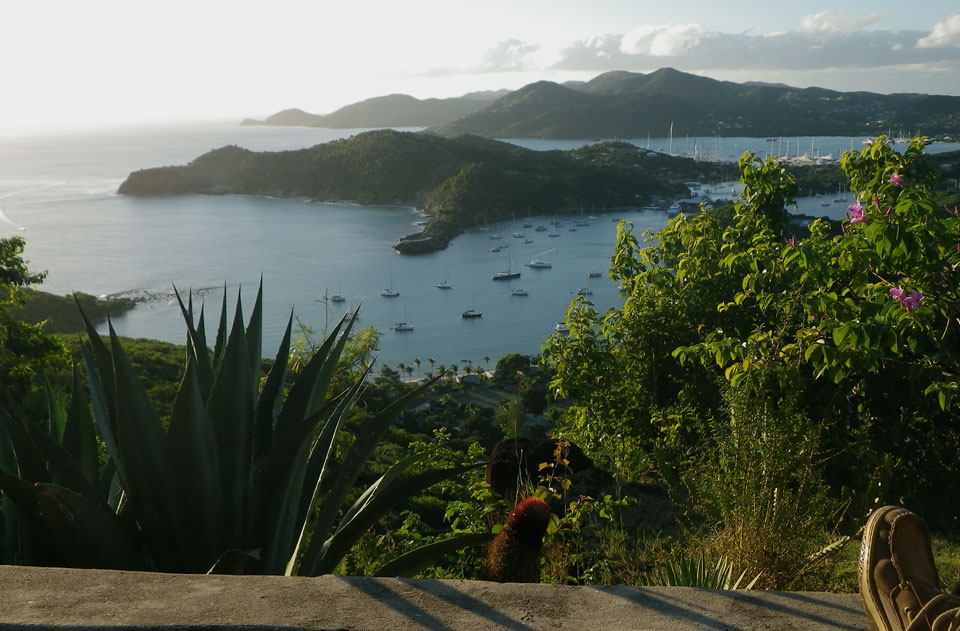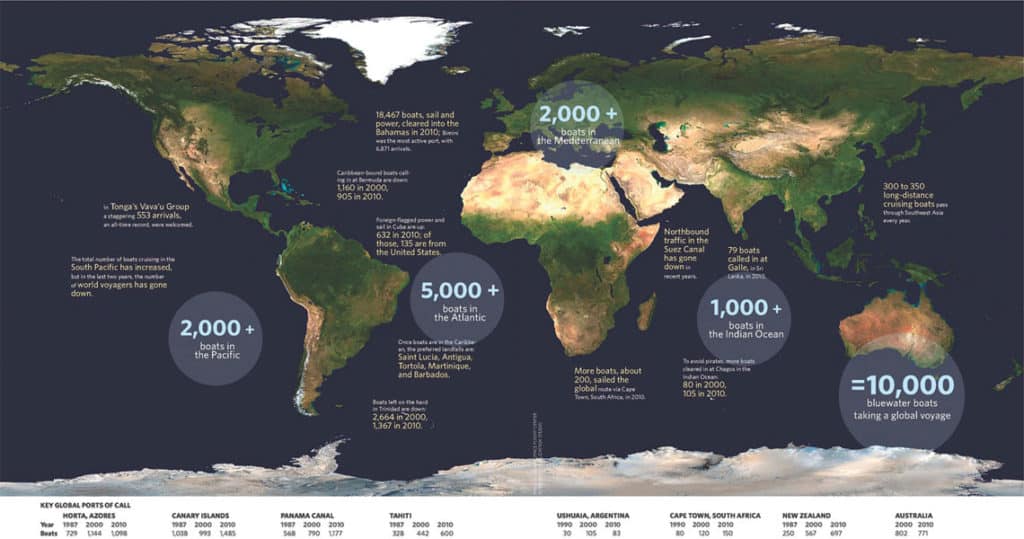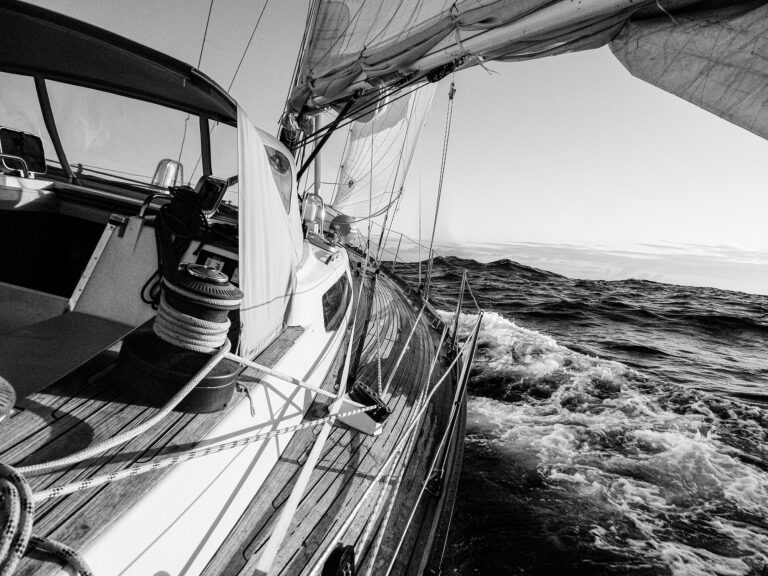
Shirley Heights, Antigua
The concerns caused by deteriorating safety in certain parts of the world, coupled with the effects of the global economic downturn, appear to have had an impact on the global movement of cruising yachts. A survey conducted in 2006 showed a slight reduction in cruising boats undertaking a world voyage; here I’ve updated those figures and have compared them to similar surveys I’ve conducted since 1984. The data for this report represents the number of foreign flagged yachts that have passed through 50 of the most significant ports on the world cruising circuit.

The findings show impressive increases in some regions, such as the Pacific Ocean and Caribbean, a flattening of numbers in others, such as the North Atlantic, and a downturn in yet even more areas, particularly the Indian Ocean. Compared to a decade ago, there are as many people out there cruising, but while the numbers have gone up in some areas, the number of truly long-distance world voyagers appears to be slightly down. That would explain why visits to the Caribbean are up, while the number of yachts left in Trinidad for hurricane season has dwindled, and also why more sailors prefer to spend more time exploring the Pacific rather than just dashing through it.
Read the findings from:
The Atlantic Ocean
The Pacific Ocean
Southeast Asia and Indian Ocean
End Notes:
Does a sailor need to cross a specific number of oceans to be considered a world cruiser? I’ve always defined this group as people who set off on a long voyage, usually of several years, whose aim is to eventually complete a circumnavigation.
Over the last decade the numbers completing a circumnavigation remain from 150 to 200 boats; however, due to piracy concerns, over the last two years the numbers have dipped and the route has changed, with the Cape of Good Hope option in ascendance.
As well, attempting to make an assessment of the number of boats actually engaged in world cruising is bound to be less accurate. Such a figure should only include boats undertaking a longer voyage and exclude those that are engaged in nearby coastal cruising.
Based on the figures for 2010, I estimate that on a global level there are approximately 10,000 cruising boats undertaking a long voyage, of which about half would be in the Atlantic, 2,000 in the Pacific, 1,000 in the Indian Ocean, and 2,000 in the Mediterranean. Above all the noise, one fact remains certain: Those who are planning to cruise can take heart from the fact that such attractive destinations as the South Pacific will always have room for them.
CW editor at large Jimmy Cornell has just published Cornell’s Ocean Atlas, with pilot charts based on weather information gathered by a network of meteorological satellites. For more details of this and other books, consult the author’s website.








